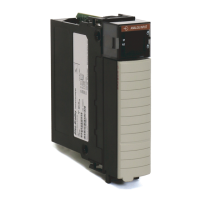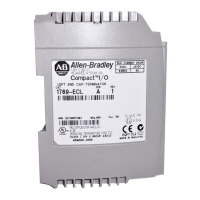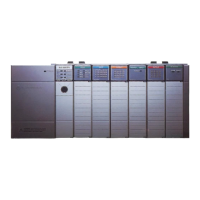56 Rockwell Automation Publication 1756-UM058G-EN-P - November 2012
Chapter 3 Common Module Features
Output Data Echo
During normal operation, when a controller sends out an output command to the
ControlLogix system, the output module that is targeted for that command
returns the commanded state of the output to the system. This process verifies
that the module has received the command and will try to execute it.
Other devices can use this broadcast signal through a Listen-only connection to
determine the desired state of the output without having to interrogate the
owner-controller.
Monitor Fault Bits
The output data echo only matches the commanded state of the outputs if the
module is operating under normal conditions. If there is an anomaly with the
module, the commanded state and the output data echo may not match.
You can monitor the fault bits for your output points for fault conditions. If a
fault occurs, the fault bit is set and your program alerts you to the condition. In
this case, the output data echo may not match the commanded state of the
outputs.
If there is a mismatch between the commanded state of the outputs and the
output data echo, check your output module for the following conditions:
• Communication fault.
• Connection is inhibited.
• Blown fuse—The module will not turn on an output if an overload or
short circuit is detected.
• (1756-OA8D and 1756-OA8E only) Loss of field power—The module
will not turn on an output unless AC power is detected.
Isolated and Nonisolated Varieties of Output Modules
As with input modules, ControlLogix output modules provide isolated or
nonisolated wiring options. I/O modules provide point-to-point, group-to-
group, or channel-to-channel wiring isolation. Your specific application will
determine what type of isolation is necessary and which output module to use.

